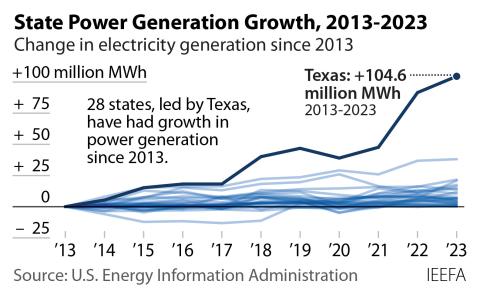IEEFA India: Company’s new estimates for tariffs at proposed Khurja thermal coal plant are inconsistent and unrealistic
SYDNEY – In a report we published last week, IEEFA found that Tehri Hydro Development Corp. (THDC)’s proposed Khurja coal-fired power plant in Uttar Pradesh, India would push up the cost of electricity at a time when the country’s renewable energy options are far cheaper, accessible and more sustainable.
One of the major stumbling blocks in THDC’s Khurja non-minemouth coal-fired power plant proposal, in addition to legal challenges, is its reliance on a prohibitively expensive 900 kilometer (km) long rail haulage. In addition to current global increases in the market price of coal, the long haul railway’s significant freight charges inflate the electricity costs of the proposed Khurja plant.
After we released our findings last week, THDC disclosed a new first year tariff projection of Rs3.91/ kilowatt hour (kWh), dramatically lower than its previous estimates. We find the company’s new estimate to be unrealistic, and retain our estimated tariff for Khurja of Rs5.67/kWh.
How did we come to that conclusion?
THDC’s Environmental Impact Assessment (EIA) on the Khurja proposal,- published in 2016. predicted that the full cost of energy would be Rs4.88/kWh, with the levelized cost of energy (LCOE) at Rs4.63/kWh in the plant’s first full year of operation. THDC’s new estimate implies negative real tariff indexation over the lifetime of the project. While that would be a contractual certainty for an Indian renewable energy tariff, it would be unprecedented for a coal-fired power plant and the assumption warrants explanation.
In its revised tariff projection for the Khurja project, THDC suggested an alternative new low cost figure of Rs3.61/kWh. While IEEFA agrees a levelized cost of energy tariff of Rs3.61/kWh would be desirable, we find that the new estimate is unrealistic. It is inconsistent with rising coal prices and railway transportation costs in India that would logically make the new tariff estimate even higher than the 2016 estimate, not lower.
Current Indian railway freight charges indicate it would cost Rs1,597 per tonne to transport coal across the 900km haul to the plant. This equates to Rs1.28/kWh of transportation costs for each unit of electricity generated from the proposed Khurja plant.
The Central Electricity Authority’s (CEA) draft report on new environmental norms for thermal power plants (2017) suggested the estimated tariff for a new pit-head super critical power plant operating at 60% Plant Load Factor (PLF), including emission control compliance, would be Rs4.39/kWh.
Adding transport costs of Rs1.28/kWh to CEA’s suggested tariff of Rs4.39/kWh leads us to cite a realistic tariff for the proposed Khurja plant of Rs5.67/kWh.
TO BE CREDIBLE, THDC SHOULD PUBLICLY DISCLOSE THE PARAMETERS they have used to derive Khurja’s lower new tariff estimation.
The new tariff put forward by THDC implies electricity cost estimates have fallen 25% against their own published assessment in 2016, despite recent high coal cost inflation.
THDC also assumes that Khurja would operate at a 90% PLF, an assumption that is way out of step with the current dynamics of the Indian coal-fired power sector,, which has averaged below a 60% PLF for the last two years consecutively. Increased low cost variable renewables require firming capacity, and if new coal is to provide that solution, it needs to be flexible and fast ramping, implying a strategy of sustained low PLFs. This lower PLF requires materially higher tariffs to service capital cost amortisation. One would hope the Power Finance Corporation (PFC) has learnt from their many thermal power plant stranded asset mistakes in recent years.
IEEFA maintains the proposed Khurja thermal power project is an expensive burden on the businesses and community of Uttar Pradesh.
THDC has also characterized this proposal is a “clean” coal-fired power plant, but we would suggest there is no such thing. The installation of a flue gas desulfurization (FGD) scrubber system is a pre-requisite for any new coal power plant in India, but it still leaves emissions 100% higher than any wind, solar or hydro electricity alternative, something the region around Delhi needs to prioritise at least until the air pollution crisis has been addressed.
With 7GW of coal-based capacity already under construction, IEEFA argues that the Khurja plant should be cancelled. Uttar Pradesh instead needs further additions of low-cost renewable energy sources that offer electricity tariffs with zero indexation; more flexible/ firming generation; expanded interstate grid connectivity; storage (pumped hydro and distributed battery options); and demand response management options to better integrate variable renewable energy sources into the grid now and into the future.
Finally, it would be wise for Uttar Pradesh to utilise cheaper cleaner renewable energy tariffs readily available at +/- Rs3.00/kWh. These are are a much better investment option in THDC’s area of management expertise than the now out-dated Khurja proposal.
Tim Buckley is IEEFA’s director of energy finance studies, Australasia. He can be reached at [email protected]. Kashish Shah is an IEEFA research associate. He can be reached at [email protected].
RELATED ITEMS:
IEEFA update: India coal plant cancellations are coming faster than expected
IEEFA update: Risk to India’s banking sector in rising tide of stranded assets













